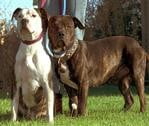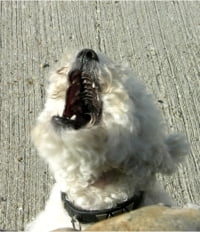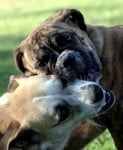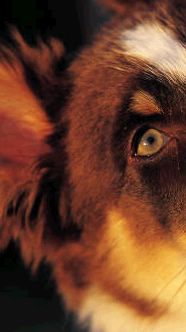What Breeds Bite?
That’s a complex question to answer and over the years, trends change.
In Brisbane during the 90’s, German Shepherd type dogs caused more bites than any other breed, but they were then most commonly owned breed of dog in Brisbane at almost 11 percent of the dog population.
What Breeds Bite?
That’s a complex question to answer and over the years, trends change.
In Brisbane during the 90’s, German Shepherd type dogs caused more bites than any other breed, but they were then most commonly owned breed of dog in Brisbane at almost 11 percent of the dog population.
- Staffies and their cross are the most commonly owned breed at 9.9% of the Gold Coast (Queensland) population
- The second most commonly owned breed is the Maltese (9.3%)and its cross
- And the Labrador and its cross come in a distant third at (6.5%)
- The Poodle, Border Collie, Jack Russell, Fox Terrier, Australian Cattle Dog, Shih Tzu and the German Shepherd (and their crosses) make up the top ten dogs owned.
Then, when we compare this data with the breeds sent to me for attention for their aggression I discovered that….


For aggression to the family
The Maltese the Poodle and then the Labrador (in order) are highly ranked but this may be a virtue of their popularity. Of note is that the Rottweiler and the Kelpie are bumped into the top four for aggression to the family but they are not in the top ten of dogs owned. This means the Rottweiler and Kelpie are over-represented for aggression to the family. (Again this data includes cross breeds.)
For aggression to visitors
Breeds most commonly reported for aggression to visitors are the Maltese leading the pack but the Labrador, Jack Russel, Cattle Dog and Border Collie are about equal in second place. Again the Kelpie creeps into this list and is over-represented.
For aggression to other dogs owned
Aggression between dogs is always a worry as kids often get injured accidentally, as do the dogs owners.
The Staffordshire Bull Terrier (and its cross) are by far the evil leader of the bad breeds here and is head and shoulders above the Jack Russel and then the Border Collie. Again the Kelpie and Rottweiler elevate themselves into this group and are over-represented.
For aggression to other dogs met (e.g. when walking)
It’s dangerous if you are walking with your kids on the street and your dog gets into a brawl with another.
For this cluster of aggression, the German Shepherd tops the list but the Labrador, Jack Russell and Maltese are close on its heels.

What type of dog is good around children?
Looking at my data, the one breed that is in the top ten of own but that doesn’t appear in the aggression statistics is the Shih Tzu. So that breed gets the tick of approval for a small mostly non-aggressive family dog.

No matter what dog you have, you have to be careful when it is interacting with your children. Any breed of dog can be dangerous but certainly not all dogs are dangerous.
Toddlers and young children are more at risk because of their size and their behavior. Whereas adults are usually predictable in their behavior and movements, children are not. Where adults are quiet, children are noisy. When a large dog knocks into an adult not much happens but when the same dog knocks into a small child, the child is often bowled over like a bowling pin. Toddlers are the same height as many dogs and, amongst other effects, the direct eye contact between dog and child at that level can disturb many dogs.
Of course, some children do tease dogs without realizing the danger of their actions. As parents we must be responsible for managing our children’s behavior around dogs – any dogs. We must ensure that we engender in our children a healthy respect for dogs without creating needless fear. Even in play, a dog’s hard and sharp teeth can cause injury to the soft skin of a child and it is best to assume the larger the dog, the greater the risk.
We must also attend to our dogs too and ensure we control their behavior from a young age with sensible obedience training and humane discipline where needed.
Rather than wrestling or playing ‘rough-house’ games with dogs, children are better playing games like ‘fetch’ with a ball or Frisbee. With such games, very close interaction with the dog is minimized and the dog is stimulated to run away from the child. If the child is able to command the dog to ‘Sit’ or ‘Lie Down’ before the ball is thrown, then this gently supports the child’s control and leadership over the dog, which is always very valuable.
There is nothing better than seeing kids and canines playing together – it is so natural, but we must always keep a cautious eye open for developing problems because if your dog was to bite your child, the memory may hound you for life.

